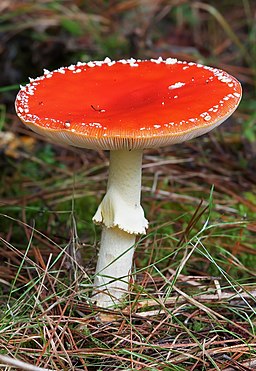Simply put, mycetism is mushroom poisoning.
Responsible for countless illnesses and even deaths across the world every year, the most common cause of mushroom poisoning is plain old mistaken identification. While nearly a hundred species of mushroom have been determined to have some levels of toxicity, the most common deadly mycetisms are attributed to
Amanita phalloides. Which when mature can be mistaken for some common edibles, and while still developing can be mistaken for a puffball.
 |
| Death Cap, Amanita phalloides, across its development. |
There are a long list of mycotoxins responsible for these poisonings and their symptoms run the gamut from death in a few days from liver failure, to respiratory failure, kidney failure, blood cell distruction, limb loss (that's right eating some mushrooms could potentially cost you an arm and a leg.. and your life.), to more mild gastrointestinal problems. Technically the sought after hallucinations and arousal effects attributed to "magic mushrooms" in the
Psilocybe genus are symptoms of mycetism.
For a more in depth look at the mushrooms responsible for mycetism, head over to the
List of Deadly Mushrooms entry page on Wikipedia.
Photo Creds:
Wikicommons- http://en.wikipedia.org/wiki/File:Death_Cap_Mushroom.jpg
This image was created by user Justin Pierce (JPierce) at Mushroom Observer, a source for mycological images. You can contact this user here. [CC-BY-SA-3.0 (http://creativecommons.org/licenses/by-sa/3.0)], via Wikimedia Commons


